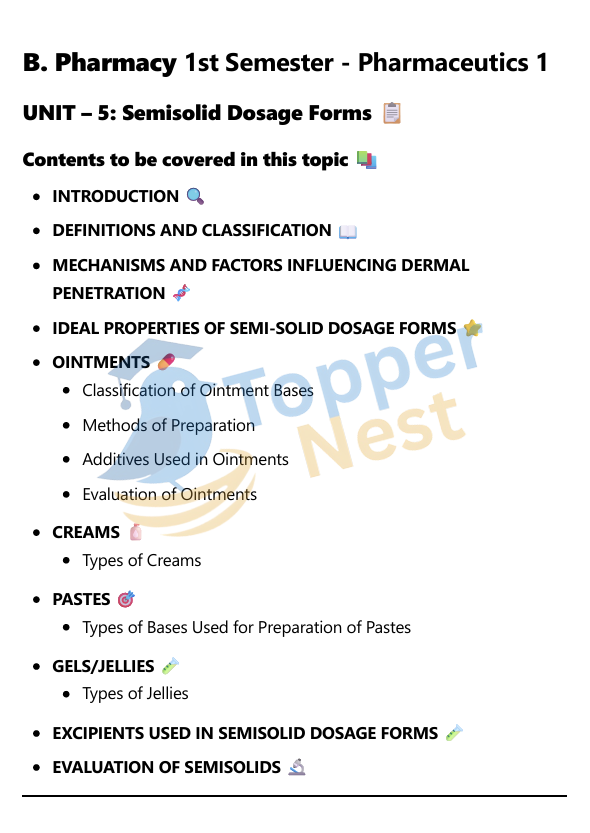Understanding the fundamentals of Semisolid dosage forms that play a vital role in delivering medications topically for local or systemic effects. These formulations offer unique advantages in terms of patient comfort, targeted delivery, and ease of application.

What are Semisolid Dosage Forms?
Semisolid dosage forms are topical preparations that have a consistency between a solid and a liquid. They’re designed for external application to the skin or mucous membranes and can be used to achieve local therapeutic effects or, in some cases, systemic absorption. They consist of a drug substance uniformly dispersed in a suitable base.
Types of Semisolid Dosage Forms
There are several types of semisolid dosage forms, each with unique properties determined by its composition and base.
- Ointments: These are thick, greasy, and viscous preparations with a high oil content. They create an occlusive layer on the skin, which prevents moisture loss and promotes drug absorption. Ointments are often used for chronic, dry skin conditions like eczema. The bases can be oleaginous (hydrocarbon), absorption, water-removable or water-soluble.
- Creams: Creams are viscous semisolid emulsions that are less greasy than ointments because they contain a higher proportion of water. They are either oil-in-water (O/W) or water-in-oil (W/O) emulsions. O/W creams are non-greasy and easily washable, making them popular for cosmetic and dermatological use. W/O creams are greasier but more occlusive, offering moisturizing benefits.
- Gels: Gels are semisolid systems in which a liquid is trapped within a three-dimensional network of solid particles or macromolecules (a gelling agent). They are typically clear, non-greasy, and provide a cooling effect as the liquid evaporates. Gels are often used for drugs that need to be delivered quickly and for conditions like acne or joint pain.
- Pastes: Pastes are essentially ointments with a very high percentage of finely powdered solid materials (usually 25% or more). This makes them thicker, stiffer and less greasy than ointments. They form a protective, absorbent and non-occlusive barrier on the skin, making them useful for localized conditions and for absorbing moisture from an affected area.
Advantages and Disadvantages of Semisolid Dosage Forms
| Advantages | Disadvantages |
| Localized Action: They deliver the drug directly to the site of action, reducing systemic side effects. | Dose Inaccuracy: The amount of drug applied can vary, leading to inconsistent dosing. |
| Avoids First-Pass Metabolism: They bypass the liver, increasing the bioavailability of certain drugs. | Poor Patient Compliance: Some formulations can be greasy or messy, causing staining and discomfort. |
| Protective and Emollient Effects: The bases can protect and moisturize the skin. | Stability Issues: Formulations may be prone to oxidation or microbial contamination. |
| Alternative Route: Useful for patients who can’t take oral medications. | Allergies/Irritation: The bases or excipients may cause irritation or allergic reactions in some patients. |
FAQs – Semisolid Dosage Forms
1. Why are semisolid dosage forms preferred for skin conditions?
They allow localized treatment, reduce systemic side effects and are easy to apply with controlled dosing.
2. What is the main difference between ointment and cream?
Ointments are oil-based and more greasy, while creams are emulsions with lighter texture and better cosmetic acceptability.
3. What is the function of penetration enhancers?
They temporarily alter skin permeability, helping drugs pass through the skin barrier more effectively.
4. Which semisolid form is suitable for weeping skin lesions?
Creams or gels are preferred because they are water-based and non-occlusive, helping the area to dry.
